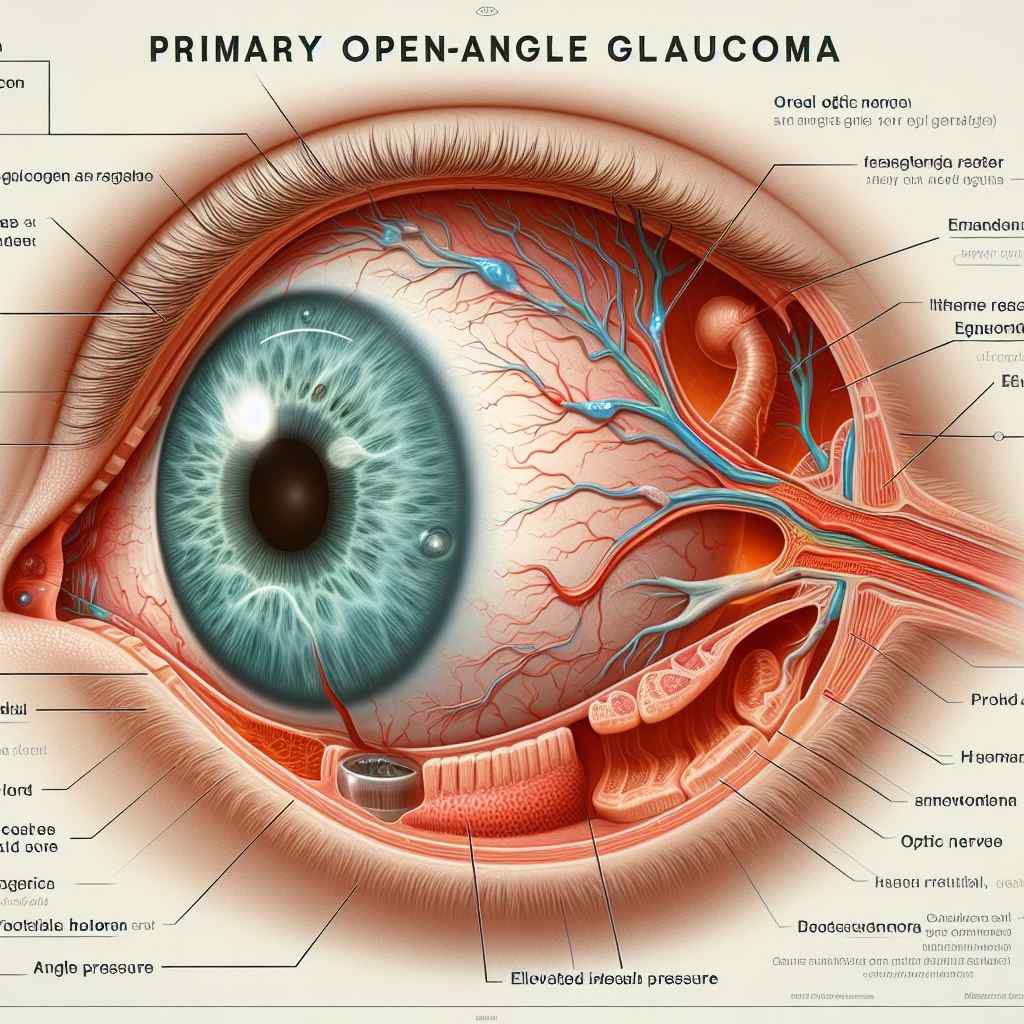
Primary Open-Angle Glaucoma: Pathophysiology, Diagnosis, Management, and Recent Innovations
Abstract: Primary open-angle glaucoma (POAG) is a leading cause of irreversible vision loss worldwide, characterized by progressive optic nerve damage and visual field loss in the absence of obvious angle closure. This article provides a comprehensive review of POAG, exploring its underlying pathophysiology, clinical features, diagnostic criteria, treatment modalities, and recent advancements. By delving into the complexities of POAG, ophthalmologists can refine their approach to patient care and improve outcomes in this challenging condition.
Introduction: Primary open-angle glaucoma poses significant diagnostic and therapeutic challenges in ophthalmology, necessitating a thorough understanding of its pathogenesis, risk factors, and clinical presentation. Early detection and appropriate management are essential for preserving visual function and preventing irreversible vision loss in individuals with POAG.
Pathophysiology: The pathophysiology of POAG involves multifactorial mechanisms, including elevated intraocular pressure (IOP), impaired aqueous outflow, and susceptibility of the optic nerve to damage. Risk factors such as age, family history, and race contribute to the development and progression of POAG, highlighting the complex interplay of genetic and environmental factors.
Clinical Features: Patients with POAG may be asymptomatic in the early stages, with gradual onset of visual field defects and optic nerve cupping detected on examination. As the disease progresses, individuals may experience symptoms such as peripheral vision loss, difficulty with night vision, and decreased contrast sensitivity. Timely recognition of clinical signs and symptoms is crucial for initiating appropriate treatment and preserving visual function.
Diagnostic Criteria: Diagnosis of POAG requires a comprehensive ocular examination, including measurement of IOP, assessment of optic nerve morphology, visual field testing, and evaluation of angle structures. Ancillary tests such as gonioscopy, optical coherence tomography (OCT), and visual field testing play a crucial role in confirming the diagnosis and monitoring disease progression over time.
Management Strategies: Management of POAG aims to lower IOP, preserve optic nerve function, and maintain visual function through a combination of medical, laser, and surgical interventions. Treatment modalities may include topical ocular hypotensive medications, laser trabeculoplasty to improve aqueous outflow, and surgical interventions such as trabeculectomy or glaucoma drainage devices for refractory cases.
Recent Advances: Recent innovations in POAG management focus on optimizing diagnostic techniques, enhancing treatment efficacy, and minimizing treatment-related complications. Advancements such as minimally invasive glaucoma surgery (MIGS) devices, novel drug delivery systems, and personalized treatment algorithms offer potential benefits in achieving IOP control and preserving visual function in individuals with POAG.
Conclusion: Primary open-angle glaucoma represents a significant public health concern, requiring vigilant screening, early diagnosis, and timely intervention to prevent irreversible vision loss. By staying informed about the latest research and innovations in POAG management, ophthalmologists can optimize patient outcomes and improve quality of life for individuals affected by this sight-threatening condition.
For further reading and reference:
- American Academy of Ophthalmology – Primary Open-Angle Glaucoma: https://www.aao.org/eye-health/diseases/glaucoma-open-angle
- Glaucoma Research Foundation – Primary Open-Angle Glaucoma: https://www.glaucoma.org/glaucoma/primary-open-angle-glaucoma.php
- National Eye Institute – Glaucoma: https://www.nei.nih.gov/learn-about-eye-health/eye-conditions-and-diseases/glaucoma


